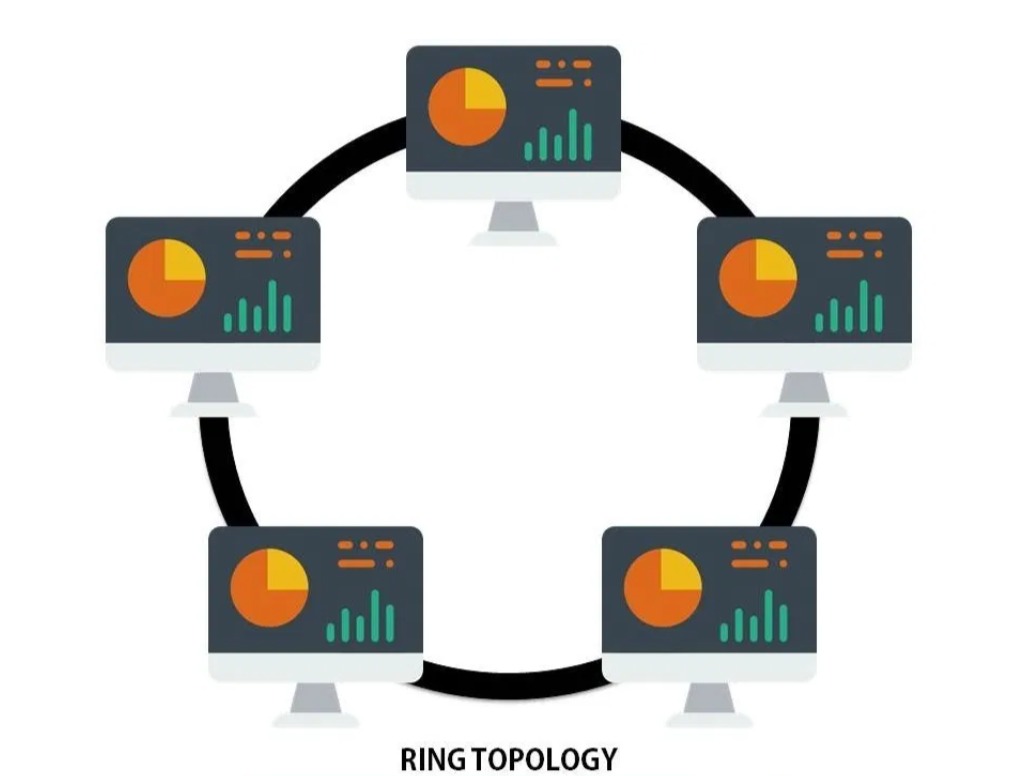This time Matob will explain what Ring Topology is in a computer network? Accompanied by sample images and their advantages and disadvantages.
Topology itself is a branch of mathematics, which is developed from the concept of geometry and set theory, which discusses the unchanging spatial structure in bi-continuous deformations (i.e. space that can be bent, folded, shrunk, stretched, and twisted, but not allowed to be cut. torn, stabbed or glued).
What is a Computer Network Topology?
This term is used in computer networks because of the need to simplify the shape of a network into a certain form, which although in reality is not that simple, it has a similar form concept.
Computer network topology is a method used to connect two or more computers, based on considerations such as cost, scale, and the need for the formation of the network itself, whose shape will refer to geometric shapes in topology.
What is a Ring Topology in a Computer Network?

Ring topology is a network where each device / node is connected to neighboring nodes that form a ring, data will circulate from one computer to another. The data flow in this ring topology can be uni-directional or bi-directional.
If there is damage to the cable or device, the data cycle is hampered and can bring down the entire network.
Uni-directional ring topology can transfer data in a clockwise or counterclockwise direction. thus, the uni-direction ring topology can be referred to as a Half-duplex network.
While the Bi-directional ring topology can transfer and receive data at the same time. Thus, a bidirectional ring topology can be referred to as a full duplex network.
The data flow in a ring topology is based on the principle of token passing, tokens are passed from one computer to the next, and only computers with tokens can transmit data.
The receiving computer takes the data from the token and sends the token back to the sending computer with an acknowledgment signal. After verification, the token is regenerated.
Only computers that are in the process of transmitting will send data containing tokens. The other computers have to wait for the empty token to reach them. This network topology is usually found in schools, small buildings, and offices.
In the event of a computer or cable failure, the entire network will go down
Advantages of Ring Topology
- The data flow in a circular direction minimizes the possibility of packet collisions.
- The uni-directional ring topology provides a very high speed.
- I have better performance than a bus topology, even when the number of nodes increases.
- The ring network can handle a large number of nodes in the network (ROBUST).
- Can handle heavy traffic compared to bus topology due to Token Passing principle.
- Ring topology provides good communication over long distances.
- Maintenance of ring networks is much easier than bus networks.
- No need for a network server to control the data flow.
- Troubleshooting in ring networks is much easier because wiring faults can easily be found.
- Ring networks are cheaper than other topologies (mesh, hybrid, and tree topologies).
Disadvantages of Ring Topology
- One break in the cable can cause interference throughout the network
- On the Uni-directional Ring, the data packet (token) must pass through all nodes.
- Adding and deleting any nodes in the network is difficult and can cause problems in network activity.
- Ring networks are much slower than Ethernet networks under normal load conditions.
